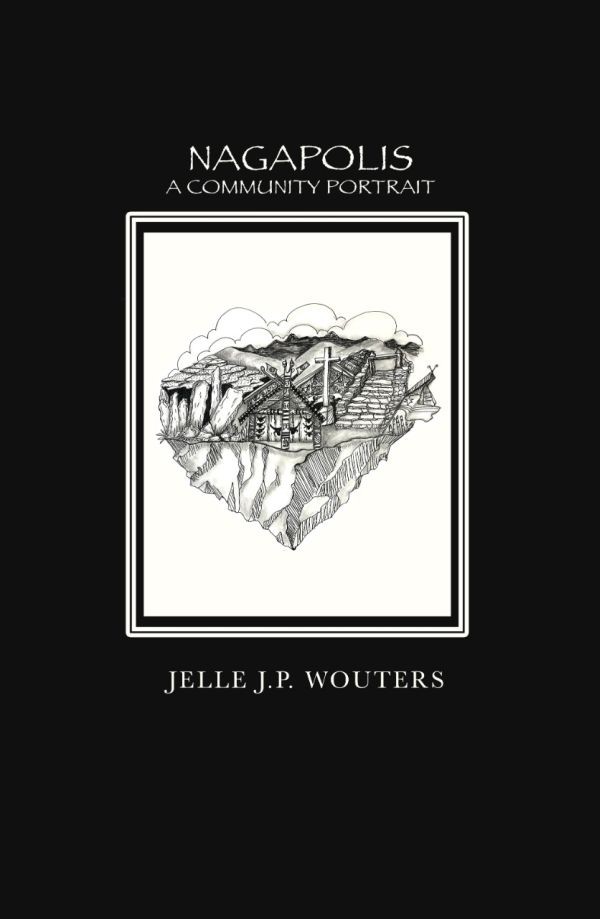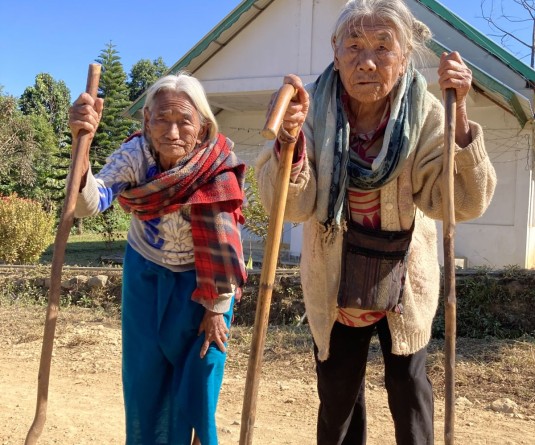Publisher: Barkweaver, Pages: 230, MRP: 400

An Overview of Jelle JP Wouters’ Nagapolis: A Community Portrait
Avinuo Kire
Capturing the spirit of a community is a daunting task, all the more so when one has to lucidly commit such a representation on paper. In his aptly titled book Nagapolis: A Community Portrait, noted author and social anthropologist Jelle J P Wouters offers a keen eye, one that is both objective and empathetic, as he undertakes this charge through twenty eight finely tuned topical essays. Each essay brings into focus a key issue pertaining to Naga life- culture and tradition, politics, history, environment, shifting thought patterns- all that concerns a fast evolving and somewhat fraught Naga society. As the book’s blurb states, the essays range ‘…from feasting to factionalism, customs to cuisine, prophecy to politics, culture and social mores’.
This anthology begins with an introduction which by itself is a succinct commentary on the Nagas. Wouters provokes varied questions and reflections which ultimately lead to the most complex, although seemingly innocuous question, which is, ‘Who and what is a Naga?’. Orality & story telling traditions, migration (in waves and ripples!), colonial records, indigenous archeology etc., all enter the equation in the quest to uncover definitive answers and possibilities. Indigenous archeology draws on folktales to identify excavation sites and this method seems quite appropriate for the Nagas whose cultural heritage is primarily intangible in nature. What further adds value to this book is that the author does not shy away from addressing some topics which non Naga writers writing on the Nagas usually tend to ignore or gloss over- some such concerns being cultural theft, recognizing the value of oral sources and traditions, discarding colonial lenses and how best to sensibly assess colonial writings. Wouters’ idea of the Naga is open and inclusive, and he effectively brings to life the broad network of traditional Naga village republics which make up the ‘Naga kin universe’ spread over proper Nagaland, parts of Manipur, Assam, Arunachal Pradesh and across the border in Burma, by invoking and appropriating the idea of the ancient Greek ‘polis’ which basically means a ‘city-state’. Ergo- Nagapolis.
The essays in this collection effortlessly shift back and forth through time, space and thought. Insightful pieces like ‘Feasts and Feast Givers’, ‘A Story of Early Capitalist Refusal’ and ‘Wrestling for Peace’, amongst others, may leave a Naga reader with a faint sense of nostalgia as it poignantly reveals the changing value system and thought patterns that time has wrought upon the traditional Naga world view. Wouters is a sharp political analyst and reveals original idea/s and thought in ‘The Legal and the Lethal’, an incisive essay analyzing the horrendous Oting killings in the December of 2021. This same creative thought is reminiscent in ‘Supranational Citizenship’, which explore ways to recognize Naga identity beyond political boundaries. Other noteworthy political essays are ‘Forethoughts on a Political Settlement’ and ‘Factionalism as Strategy’. The author’s careful research of modern Naga history is evident through significant little bits of information, one such example being that it was the People’s Independence League (PIL) who first declared Naga independence on 14th August 1947 in ‘A History of Failed Accords’. Another gem of an essay is ‘The Battle of Kikruma’, an interesting historical account about a little known battle between ‘spear wielding Naga warriors and rifle-toting British-led troops’ in 1851. The reality of how democracy actually exists and functions in the present day state of Nagaland is depicted in ‘Against Elections’, ‘Patriarchal Politics’ and ‘The Culture of Proxy Voting’. ‘The Road Not Taken’ together with ‘Resource Extraction and Ecological Havoc’ provide thought provoking insights into Article 371 (A). The book appears to come full circle with one of the closing articles being ‘Of Feet and Roots’, an excellent essay which convincingly reconstructs Naga origin and migration while significantly acknowledging that the Naga story is ‘…sufficiently wide and deep to accommodate multiple narrations’.
Nagapolis: A Community Portrait adeptly spans history to present day tensions and conflicts within the Naga society. Juxtaposing known theories and ideas, backed with meticulous conscientious research and plentiful insider perspectives, Wouters is well versed with the complex geopolitics of the region. His writing has an easy narrative style which makes for a refreshingly enlightening read as the essays do not become tedious, regardless of the topic he tackles. All of these results in making this book an important and necessary addition to the growing oeuvre of writings on the Nagas. Ultimately, Nagapolis: A Community Portrait offers not solutions, but better still, probes into the whys and hows of vexed issues in a sensitive, informed, dialectical manner- thereby creating a reliable portrait of a community. Perhaps this could contribute in showing a way forward.




